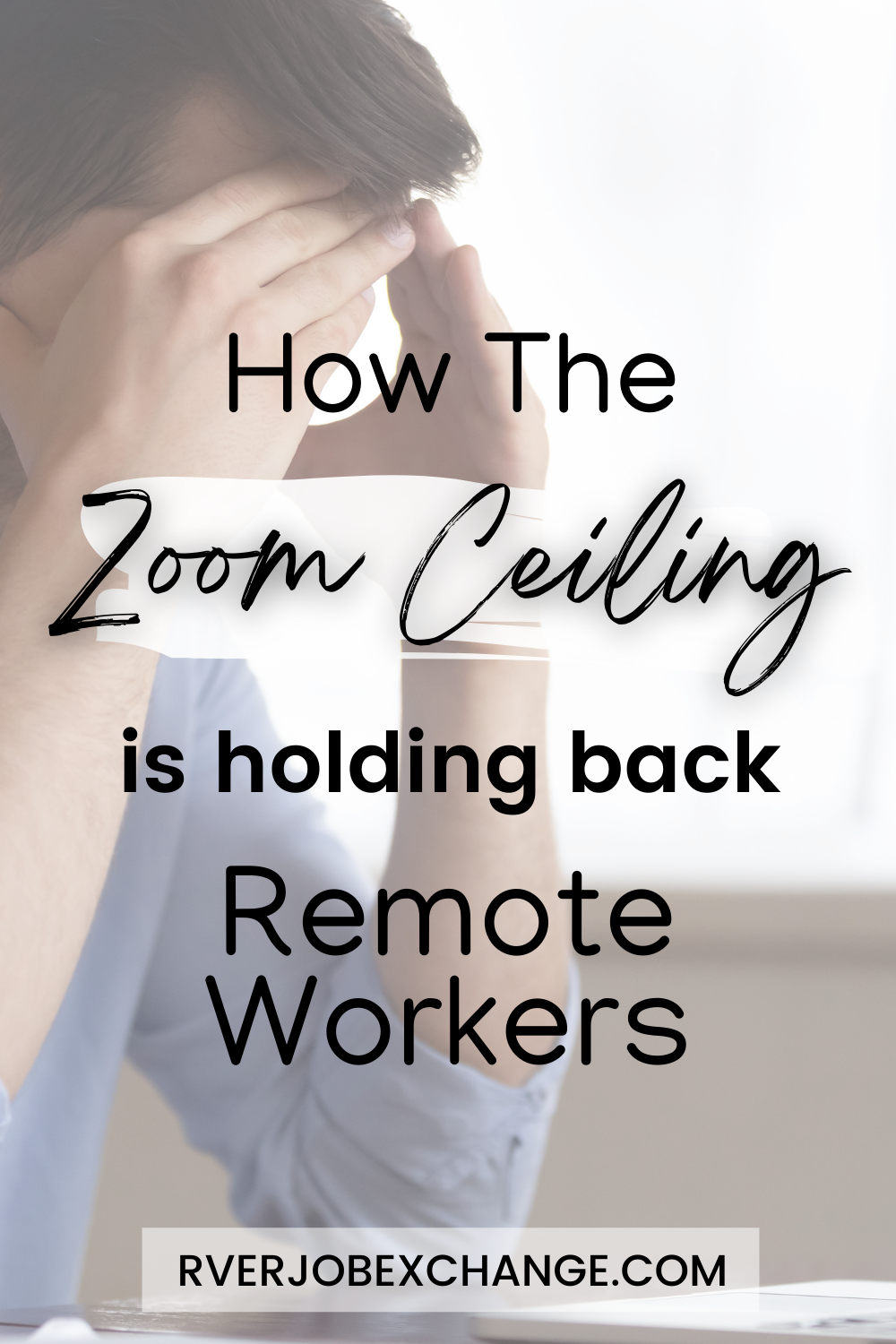Have you heard of the Zoom Ceiling?
You’ve heard of the glass ceiling, but have you heard of the similar “Zoom Ceiling”? Coined by TinyPulse’s People Scientist, Dr. Elora Voyles, the phrase describes how remote workers are being passed over for promotions in favor of on-site staff.
Put simply: Out of sight, out of mind.
She says the phrase is used to describe “favoring those who are in the office compared to those who are not, which can keep remote workers from getting promotions and leadership positions.”
We would add to that assessment that it also impacts bonuses, raises, and work assignments wherein remote staff are often put on lower profile projects.
Not only is this a hidden cost of remote work, it disproportionately impacts already-marginalized workers, according to Dr. Voyles.
The problem predates COVID-19 and was most certainly exacerbated by the pandemic. But we are cautious in approaching the topic, as most studies commonly referred to in the industry tend to reference other nations and occurred before Covid.
We all lack current data, but one may extrapolate that because the Zoom Ceiling existed prior to Covid, and because the number of remote workers skyrocketed during Covid, the effect of the Zoom Ceiling is accelerated now.
Why is this happening?
The Zoom Ceiling isn’t necessarily a dark, nefarious plan to punish remote workers. Instead, it is a phenomenon that is believed to be based on subconscious biases.
If the pandemic proved anything, it’s that the outdated metric of measuring productivity based on how long your butt is in a chair (in an office in front of a manager) was wildly flawed. When folks took their company-issued laptops home for what we thought would be “15 days to slow the spread,” productivity actually improved in most cases.
Imagine if a CEO outright rejects remote work as an option, as Goldman Sachs’ CEO famously did during the pandemic (calling it an “aberration”) – that not only impacts individuals working remotely, but that attitude trickles down to individual managers who feel they must reward on-site workers first to save themselves. (Curious how other CEOs and leaders perceive the future of remote work? Take a look at this article.)
The likelihood of a remote worker getting a promotion may now depend on an individual manager’s attitude, which is impacted not just by the CEO, but by where they work from. A manager who commutes and works 9-5 on-site will likely favor others who follow suit, leaving hybrid and remote workers in a less favorable position.
An advantage of working remotely is avoiding the time-wasting gossip around the watercooler and the subsequent microaggressions, and potentially a healthier work-life balance, but a tremendous disadvantage is not being able to have spontaneous sidebar conversations with managers and other leaders in the company that an on-site worker benefits from.
The Society for Human Resource Management (SHRM) explains that this all boils down to a “proximity bias.”
Organizational assessments once reviewed promotions and raises based on gender, race, and age, but going forward should include an employee’s work location, be it remote, hybrid, or on-site.
So what can you do to avoid the Zoom Ceiling?
 As a remote worker, the onus should NOT be on you, and companies should be adapting to this problem as they become aware of it, but for now it is a weight put squarely on your back.
As a remote worker, the onus should NOT be on you, and companies should be adapting to this problem as they become aware of it, but for now it is a weight put squarely on your back.
While we await the cultural shift to unfold and for companies to take action, there are several things you can do to avoid the Zoom Ceiling yourself, especially when a company doesn’t have any policies in place to address the problem.
- Seek out more one-on-ones with your manager. Don’t be out of sight or out of mind, but don’t be annoying. If you request an ongoing 1:1 scheduled with your manager, you’re more likely to remain top of mind rather than an afterthought. If they won’t agree to a regularly scheduled meeting, try to request one-on-one time with them every other week or so to make sure you’re soliciting feedback.
- Secure a mentor, a coach, and a sponsor. They’re not the same thing. The saying most commonly used is that a coach talks to you (is typically someone you pay to guide you), a mentor talks with you (can be anyone in your industry that is a few steps ahead of you in your career, who can provide feedback and advice), and a sponsor talks about you (a long-term relationship with a senior stakeholder willing to use their influence in the company to serve their protege).
- Take your professional development into your own hands. If you can show your manager that you’re remote but you’re still engaged, you’ll easily stand out, especially in companies that aren’t encouraging or paying for professional development. Ask peers at other companies what online courses they’re taking or certifications they’re pursuing – some will be in leadership, others will be in hard skills to improve workplace viability, and many are free.
- Speak up! If you accomplished something, speak up (no one’s going to do it for you) – forget humility, that’s not an option right now. If you don’t feel connected, speak up. If you feel left out of projects because you’re remote, speak up. You can be direct but kind as you advocate for yourself. But if you assume your manager knows that you’re struggling OR that you’re succeeding, you might be wrong.
- Try to keep regular hours and communicate that to your manager. Wait, hear us out on this… Remote work allows many to keep flexible hours and is even encouraged by some employers, but if a manager reaches out at 4:10pm with a last-minute question and you stopped working at 4:00pm, they may question you about that and subconsciously doubt your dedication. So be clear with your hours kept, even if it’s not 9 to 5, and if you can keep it regular, that will help you in the long run to remain accessible to your team. And as a bonus, if everyone knows your hours, they’re less likely to ping you during your afterhours.
- Optional: Turn your camera on. If there are no accessibility challenges you’re contending with, keep your camera on whenever possible. People on-site have ample opportunity to let their personality shine, but remote workers don’t. So, IF it’s possible, use your camera as much as you can, even when you’re looking like a hot mess.
- Optional: Show up in the office sometimes. If you’re in the same geographical area as the company’s offices and it is physically possible for you to show up, do it from time to time. Face time can be a huge advantage, so if the office is accessible and it’s possible, make yourself known. This one isn’t always possible due to physical restrictions or the fact that many people work from their RV or a truly remote location, but, when possible, it is a bonus act of visibility that can help crack the Zoom Ceiling.
Remote work has so many advantages not only to workers, but employers. But the emerging data regarding the Zoom Ceiling is a tremendous setback that we’ll culturally be addressing together in real time.
It is unjust that the responsibility to address the Zoom Ceiling falls primarily on workers right now, but in the long run, ethical employers will take steps to remedy the biases that have created this uniquely modern problem.
For now, be as visible as possible as a remote worker, and you’ll improve your odds of breaking that Zoom Ceiling!
Was this post on remote work helpful? Pin it on Pinterest!




